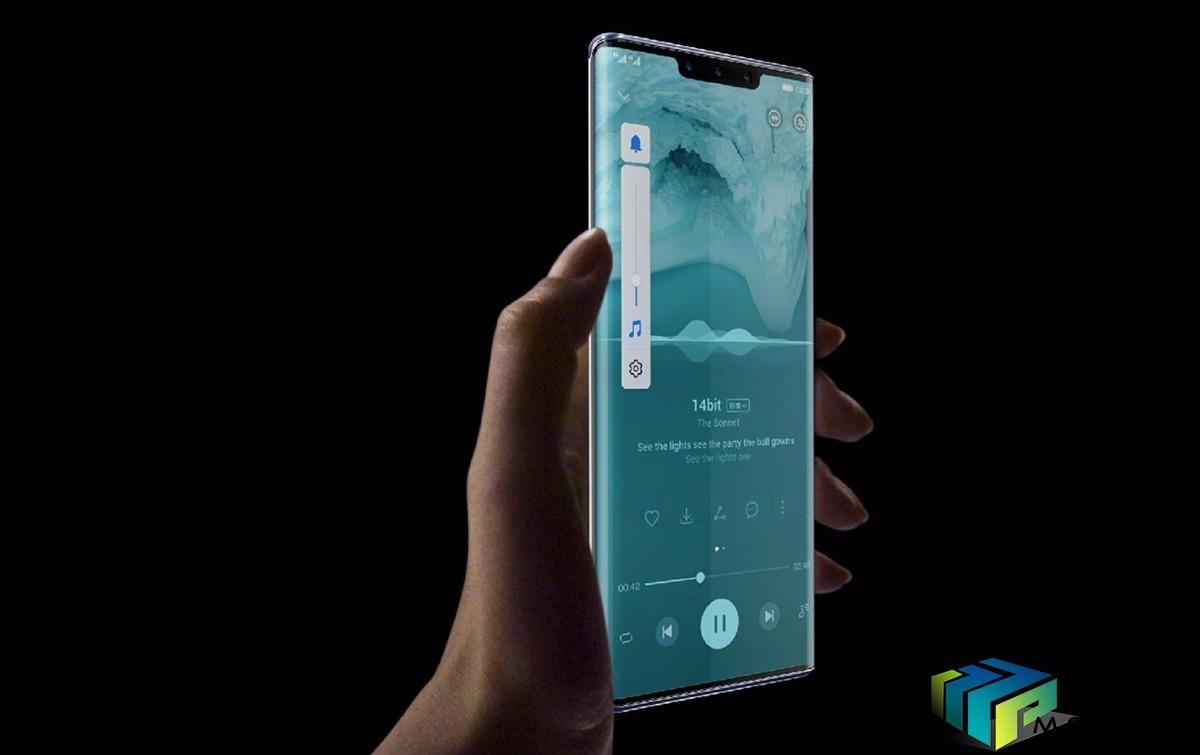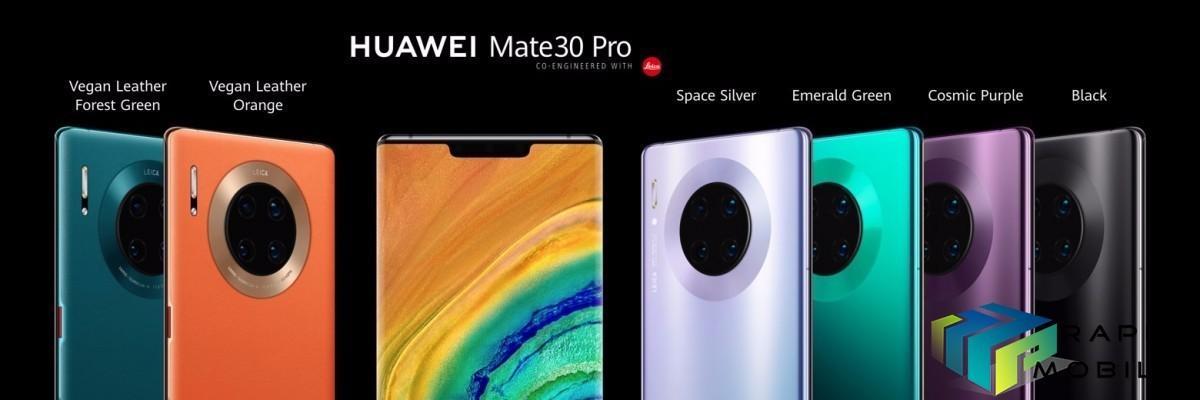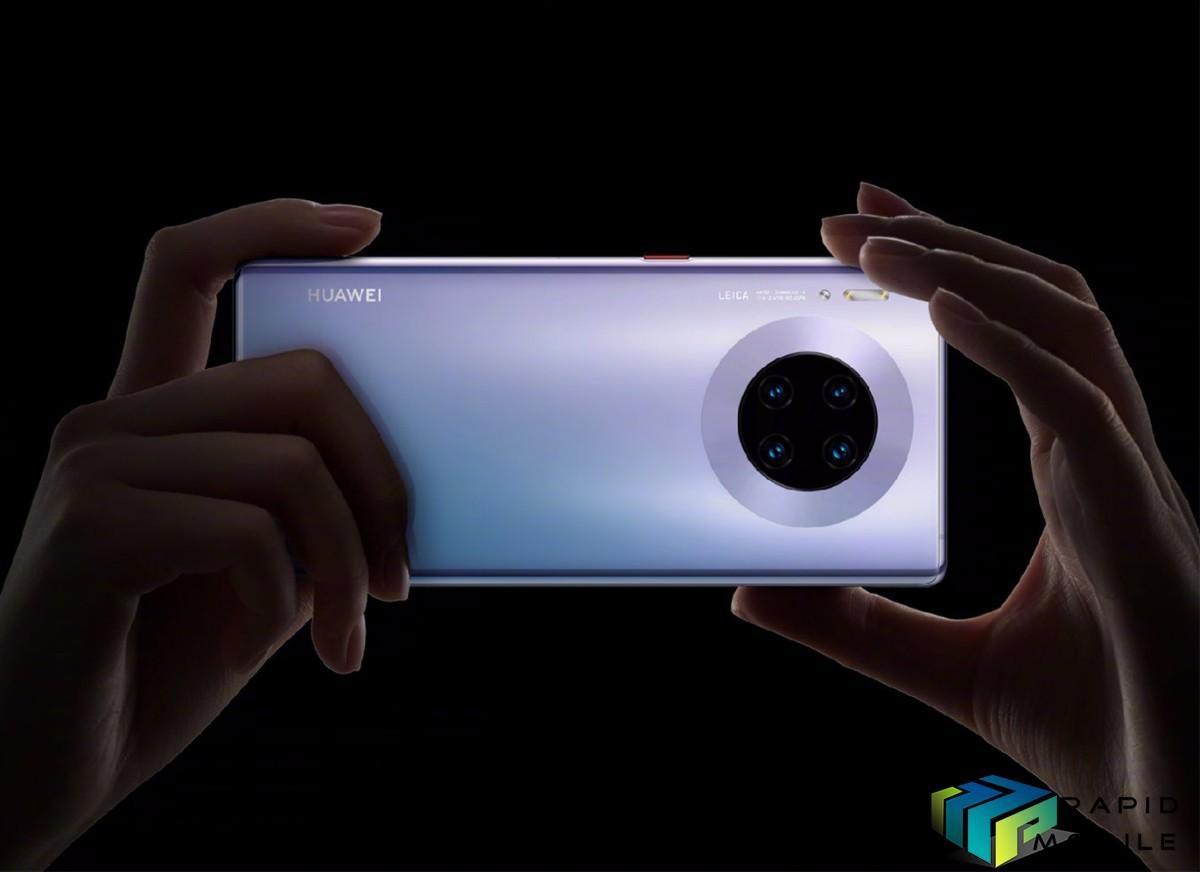 Huawei has unveiled its new Huawei Mate 30 series of smartphones at a launch event in Munich, Germany, introducing Huawei’s latest Kirin processor and a complex quad-lens camera system that’s contained in a new, circular enclosure.
Huawei has unveiled its new Huawei Mate 30 series of smartphones at a launch event in Munich, Germany, introducing Huawei’s latest Kirin processor and a complex quad-lens camera system that’s contained in a new, circular enclosure.
The smartphones are powered by Huawei’s most powerful system on chip (SoC) – Kirin 990 and Kirin 990 (5G) processed with 7nm FinFET Plus EUV technology combined for faster processing and the new DaVinci Neural Processing Unit (NPU) for maximum Artificial Intelligence (AI) performance.
Huawei Mate 30 Pro 4G and 5G Variants

The Huawei Mate 30 Pro boasts a higher-resolution display, bigger battery and more advanced camera features.
The Huawei Mate 30 Pro flaunts a 6.53-inch Flex OLED display which curves around the edges of the device. It features 2400 x 1176 pixels screen resolution, 18.4:9 aspect ratio, and DCI-P3 HDR. The notch on the display is 26.6mm, smaller compared to the one on its predecessor at 33mm. Housed inside the notch is a 3D depth camera, ambient light and proximity sensor, standard camera sensor, and gesture sensor.
Since the display is curved, the company has ditched the power button and instead it relies on a new touch-sensitive solution. Under the hood, the device is powered by the Kirin 990 chipset. Huawei says that the phone has the “most advanced 5G antenna design” with 21 antennas in total and 14 of them are dedicated to 5G.
 Coming to the camera configuration, it comes with a quad-camera setup on the back that consists of a 40-megapixel wide sensor with f/1.8 aperture, a 16-megapixel ultra-wide lens with f/2.2 aperture, and an 8-megapixel telephoto lens with f/2.4 aperture, and a 3D depth sensor.
Coming to the camera configuration, it comes with a quad-camera setup on the back that consists of a 40-megapixel wide sensor with f/1.8 aperture, a 16-megapixel ultra-wide lens with f/2.2 aperture, and an 8-megapixel telephoto lens with f/2.4 aperture, and a 3D depth sensor.
It is claimed to be the first phone with a “dedicated 40 MP Cine camera” that will shoot in 4K at 60 frames per second. It also has 4K HDR+ support as well. It can also record in slow-motion at speeds of up to 7680 fps when filming in 720p. On the front side, there’s a 32 MP snapper for taking selfies.
Inside the Mate 30’s notch, Huawei has included an array of cameras and sensors including two 3D depth camera for precise facial recognition, ambient light and proximity sensors, a front-facing camera, and a new gesture sensor.
In order to preserve as much screen real-estate as possible, Huawei also axed the Mate 30’s earpiece speaker, and instead opted for acoustic display tech that vibrates the phone’s main display, turning the entire screen into one large speaker.
This sense of minimalism can also be seen in the Mate 30’s volume controls, as Huawei has removed the phone’s physical side button in favour of a touch-sensitive virtual key. Now, you just tap the side of the phone in the right spot to raise or lower volume.
The phone is also rated IP68, making it water and dust resistant. It runs the latest EMUI 10 which is based on Android 10 operating system. The company has confirmed that the phone will support both face unlock, as well as an in-display fingerprint sensor.
The device is powered by a 4500 mAh battery which comes with support for 40W Super-Charging, 27W wireless charging, and Wireless Reverse Charging. The Huawei Mate 30 Pro will be available in Cosmic Purple, Emerald Green, Black, and Space Silver. There are two more options which comes with vegan leather finish — Green and Orange.
https://www.youtube.com/watch?v=Bj2ffS-H6WY
Huawei Mate 30
The Huawei Mate 30 has a larger 6.62-inch non-waterfall display, a trio of rear cameras consisting of a 40MP main sensor, a 16MP wide-angle lens, and an 8MP telephoto lens, which seems pretty similar to the cameras on the regular P30 that launched back in March.
Under the hood is the same 4G or 5G Kirin 990 processor, a 4,200mAh battery along with SuperCharge technology and 27W wireless charging. Its notch is narrower than on the Pro and houses fewer sensors as a result.
AI Auto-Rotate
The Huawei Mate 30 Pro introduces AI Auto-Rotate which takes advantage of the phone’s 3D camera on the front to analyse the orientation of your eyes to lock the rotation of the screen rather than relying on the gyroscope as most other devices do.
With AI Auto-Rotate turned on, you can do away with switching the auto-rotate feature off when folding your phone in your hand and laying on the couch or in bed.
EMUI 10
The Huawei Mate 30 and Huawei Mate 30 Pro both come with EMUI 10, which is based on Android 10 but no Play Store or Google services.
The Huawei Mate 30 series runs Android 10 but not the Google licensed version. It lacks Google’s apps, such as Gmail and Chrome, Google’s Play Store and the associated Google Play Services, which increasingly form the back-end of all Android apps developed for a western audience. Instead Huawei is pushing its own “fully open” mobile services platform for Android.
That is because Huawei is still on Donald Trump’s blacklist, which prevents US companies doing business with it including issuing licences to use software, as Google does for its apps and services.
While Google services are not included on phones sold in China, where they are loaded with alternatives from Chinese companies, Google’s apps are considered essential for the western market. Enterprising users may be able to load Google’s app suite on to the phones, but the lack of out-of-box support could be a deal-breaker for many.
Richard Yu, CEO of Huawei’s consumer business, said:
“We cannot use the Google Mobile Services core, we can use the Huawei Mobile Services (HMS) core,”
“Today that’s because of a US ban that these phones cannot preinstall the GMS core, it has forced us to use the HMS Core running the Huawei app gallery on the Mate 30 series phones.”
While Huawei did not provide an exact release date for its new phones, we do know how much they will cost, with Huawei Mate 30 going for €800 for an 8GB of RAM/128GB of storage config, while the Mate 30 Pro will go for €1,100 for 8GB of RAM and 256GB of storage, with the Mate 30 Pro 5G going for €1,200. There will also be a limited edition Porsche Design Mate 30 RS priced at €2,100 euros for 12GB of RAM and 512GB of storage.
Huawei Mate 30 and Huawei Mate 30 Pro Specs
| Huawei Mate 30 Series | ||||
| Mate 30 | Mate 30 Pro (Mate 30 Pro 5G) |
|||
| SoC | HiSilicon Kirin 990
2x Cortex-A76 @ 2.86 GHz |
|||
| (HiSilicon Kirin 990 5G)
2x Cortex-A76 @ 2.86 GHz |
||||
| GPU | Mali G76MP16 @ 600MHz
(Mali G76MP16 @ 700MHz) |
|||
| DRAM | 8GB LPDDR4X | 8GB LPDDR4X | ||
| Display | 6.62″ OLED 2340 x 1080 (19.5:9) |
6.53″ OLED 2400 x 1176 (18.4:9)edge-to-edge |
||
| Size | Height | 160.8 mm | 158.1 mm | |
| Width | 76.1 mm | 73.1 mm | ||
| Depth | 8.4 mm (9.2mm) |
8.8 mm (9.5mm) |
||
| Weight | 196 grams | 198 grams | ||
| Battery Capacity | 4100mAh (Rated) 4200mAh (Typical)40W charging |
4400mAh (Rated) 4500mAh (Typical)40W charging |
||
| Wireless Charging | 27W charging + reverse charging | |||
| Rear Cameras | ||||
| Main | 40MP f/1.8 RYYB sensor 27mm equiv. FL |
40MP f/1.6 OIS RYYB sensor 27mm equivl. FL |
||
| Telephoto | 8MP f/2.4 OIS 3x Optical zoom 80mm equiv. FL |
|||
| Wide | 16MP f/2.2 Ulta wide angle 17mm equivl. FL |
40MP f/1.8 RGGB sensor Ultra wide angle 18mm equivl. FL720p7680fps video capture |
||
| Extra | – | 3D Depth Camera | ||
| Front Camera | 24MP f/2.0 | 32MP f/2.0 | ||
| Storage | 128 / 256GB + proprietary “nanoSD” card |
|||
| I/O | USB-C 3.5mm headphone jack |
USB-C | ||
| Wireless (local) | 802.11ac (Wifi 5), Bluetooth 5.1 |
|||
| Cellular | 4G LTE
(4G + 5G NR NSA+SA Sub-6GHz) |
|||
| Splash, Water, Dust Resistance | IP53 (no water resistance) |
IP68 (water resistant up to 1m) |
||
| Dual-SIM | 2x nano-SIM | |||
| Launch OS | Android 10 w/ EMUI 10
without Google services |
|||


